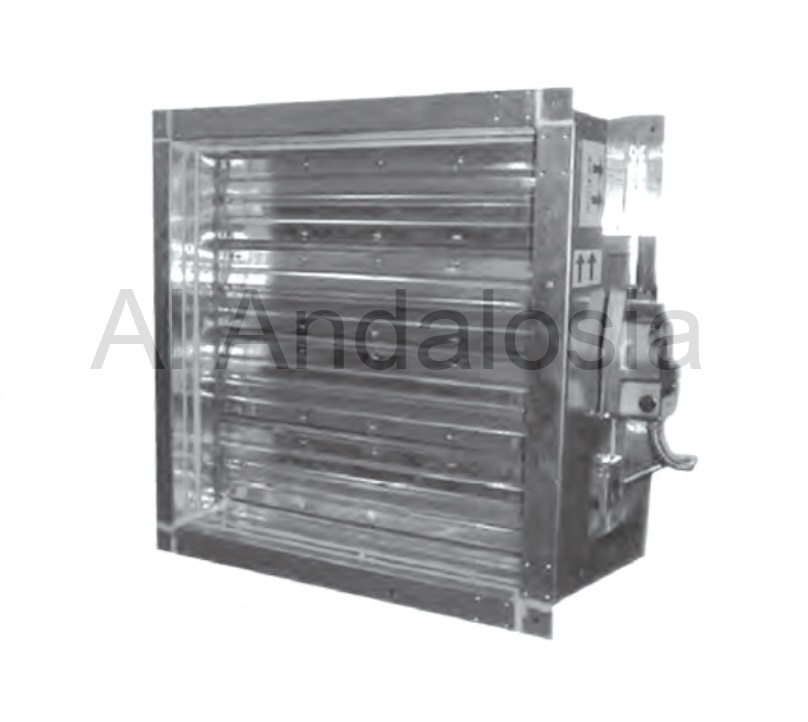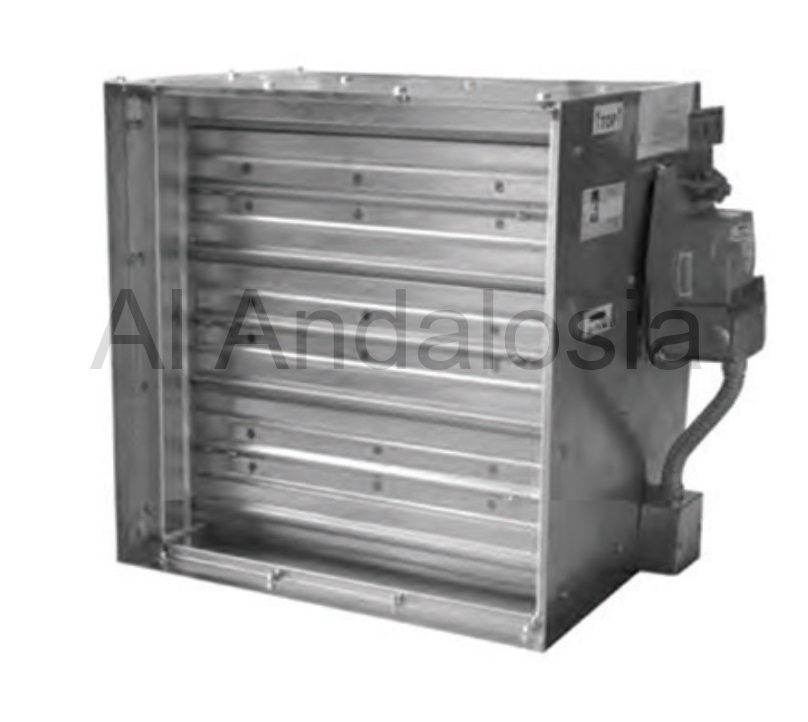Smoke Damper
Smoke Dampers can be used in two different applications,where they simply close and prevent the circulation of air and smoke through duct or a ventilation opening in a smoke barrier. Or they may be designed to control the spread of smoke using walls and floors as barriers and using the building’s HVAC system and or dedicated fans to create pressure differences. Higher pressures surround the fire area and prevent the spread of smoke from the fire zone into other areas of the building. Smoke Dampers are motorized with electric actuator. They may be controlled by a smoke or heat detector signal, a fire alarm signal, or in a variety of ways by the building control system to accomplish the intent of the design.
the smoke damper is a high performance UL 555S Classified with Leakage rating smoke damper, to ensure lowest resistance to airflow in HVAC systems with velocities to 2000 fpm (10.2 m/sec.) and 4″ w.g.
(1000Pa) may be installed vertically or horizontally (with blades running horizontally) and is rated for airflow and leakage in either direction.
FRAME
- Ga16 (1.5mm) 5″x1″(125x25mm) Frame (Hat shaped) is made of Galvanized sheet steel Corners.
BLADES
- Gauge 16 [1.5mm] 3 GROOVED type is made of Galvanized Steel.
- Leakage Rating to , Class- 2, Class- 3 at 250 °F.
JAMB SEALS
- Stainless steel jamb seals.
TIP SEALS
- Silicon rubber blade tip seals.
LINKAGES
- Mechanical linkages concealed in Frame.
BUSHES
- Fire resistant Brass-Bronze bushes
AXLE
- 1/2″x1/2″ Galvanized steel,12mm square,
BLADE STOP
- 18 gauge (1.2mm) galvanized steel angle
DRIVE SHAFT
- 1/2″x1/2″ Square shaft
SLEEVES
- Sleeves can be site installed, Galvanized steel and different gaudes are used according to duct size .
FLANGES
- Flange mounting sleeve type as optional .
ACTUATOR CONNECTIONS
Electric and pneumatic actuators are to be connected in accordance with wiring and piping diagrams developed in compliance with applicable codes, ordinances and regulations. Multiple sec-tion or single section dampers utilizing more than one actuator require all actuators to be connected to a single (common) point for simultaneous operation (closure)




